Filter by
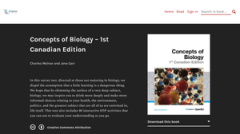
Concepts of Biology - 1st Canadian Edition
In this survey text, directed at those not majoring in biology, we dispel the assumption that a little learning is a dangerous thing. We hope that by skimming the surface of a very deep subject, biology, we may inspire you to drink more deeply and make more informed choices relating to your health, the environment, politics, and the greatest subject that are all of us are entwined in, life itse…
- Edition
- -
- ISBN/ISSN
- -
- Collation
- -
- Series Title
- -
- Call Number
- -

Conservation Biology in Sub-Saharan Africa
Conservation Biology in Sub-Saharan Africa comprehensively explores the challenges and potential solutions to key conservation issues in Sub-Saharan Africa.
- Edition
- -
- ISBN/ISSN
- -
- Collation
- -
- Series Title
- -
- Call Number
- -

Customized OpenStax Biology
Clackamas Community College customized the OpenStax Biology textbook and moved it into Odigia for BI 101. Catalog description: An inquiry-based laboratory course focusing on cellular biology, genetics, epigenetics, biotechnology and natural selection. Class uses student centered activities in a collaborative learning environment to enhance appreciation of the biological world.
- Edition
- -
- ISBN/ISSN
- -
- Collation
- -
- Series Title
- -
- Call Number
- -
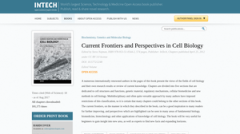
Current Frontiers and Perspectives in Cell Biology
A numerous internationally renowned authors in the pages of this book present the views of the fields of cell biology and their own research results or review of current knowledge. Chapters are divided into five sections that are dedicated to cell structures and functions, genetic material, regulatory mechanisms, cellular biomedicine and new methods in cell biology. Multidisciplinary and often …
- Edition
- -
- ISBN/ISSN
- -
- Collation
- -
- Series Title
- -
- Call Number
- -
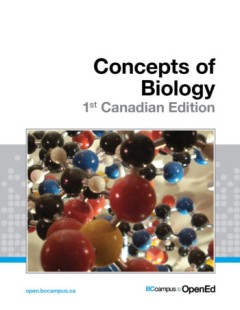
Concepts of Biology - 1st Canadian Edition
Overview: In this survey text, directed at those not majoring in biology, we dispel the assumption that a little learning is a dangerous thing. We hope that by skimming the surface of a very deep subject, biology, we may inspire you to drink more deeply and make more informed choices relating to your health, the environment, politics, and the greatest subject that are all of us are entwined in,…
- Edition
- -
- ISBN/ISSN
- -
- Collation
- -
- Series Title
- -
- Call Number
- -
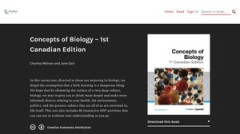
Concepts of Biology - 1st Canadian Edition
In this survey text, directed at those not majoring in biology, we dispel the assumption that a little learning is a dangerous thing. We hope that by skimming the surface of a very deep subject, biology, we may inspire you to drink more deeply and make more informed choices relating to your health, the environment, politics, and the greatest subject that are all of us are entwined in, life itse…
- Edition
- -
- ISBN/ISSN
- -
- Collation
- -
- Series Title
- -
- Call Number
- -
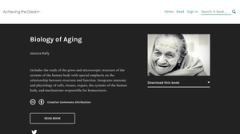
Biology of Aging
Overview: Includes the study of the gross and microscopic structure of the systems of the human body with special emphasis on the relationship between structure and function. Integrates anatomy and physiology of cells, tissues, organs, the systems of the human body, and mechanisms responsible for homeostasis.
- Edition
- -
- ISBN/ISSN
- -
- Collation
- -
- Series Title
- -
- Call Number
- 570

Biology 2e
Overview: Biology 2e is designed to cover the scope and sequence requirements of a typical two-semester biology course for science majors. The text provides comprehensive coverage of foundational research and core biology concepts through an evolutionary lens. Biology includes rich features that engage students in scientific inquiry, highlight careers in the biological sciences, and offer every…
- Edition
- -
- ISBN/ISSN
- -
- Collation
- -
- Series Title
- -
- Call Number
- 570
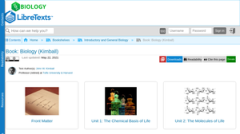
Biology
Overview: It has always seemed to me that the many parts that make up the subject of biology are related to each other more like the nodes of a web than as a linear collection of independent topics. So I believe that the power of hypertext will be better suited to learning about biology than is the linear structure of a printed textbook. Another disadvantage of printed textbooks is the inevitab…
- Edition
- -
- ISBN/ISSN
- -
- Collation
- -
- Series Title
- -
- Call Number
- 570
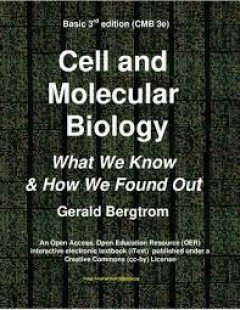
Basic Cell and Molecular Biology 3e: What We Know & How We Found Out
Overview: A grasp of the logic and practice of science is essential to understand the rest of the world around us. To that end, the CMB3e iText (like earlier editions) remains focused on experimental support for what we know about cell and molecular biology, and on showing students the relationship of cell structure and function. Rather than trying to be a comprehensive reference book, CMB3e se…
- Edition
- -
- ISBN/ISSN
- -
- Collation
- -
- Series Title
- -
- Call Number
- 570
 Computer Science, Information & General Works
Computer Science, Information & General Works  Philosophy & Psychology
Philosophy & Psychology  Religion
Religion  Social Sciences
Social Sciences  Language
Language  Pure Science
Pure Science  Applied Sciences
Applied Sciences  Art & Recreation
Art & Recreation  Literature
Literature  History & Geography
History & Geography